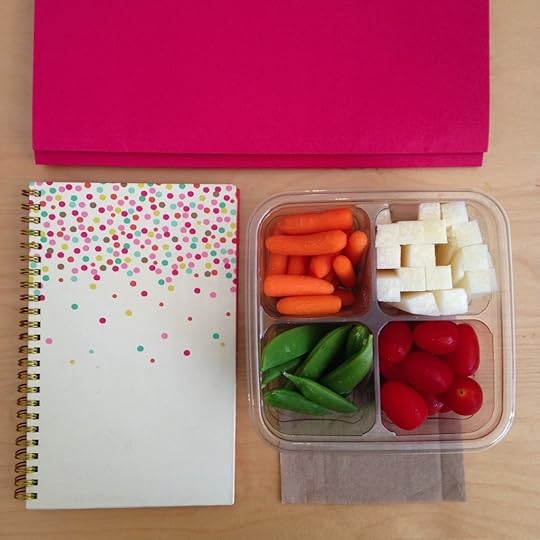7 Simple Ways to Eat More Veggies
By Jill Neil, Murad Working Parent
Mom confession: My kids eat healthier than I do.
First of all, I’m very lucky to have preschool-aged kids that eat at all. Secondly, they love fruit and veggies more than anything. In fact, they could eat them all day. If I ate as many fresh fruits and veggies as they do, I would undoubtedly be healthier inside and out. So why don’t I?
Like many busy moms, time and stress are the biggest culprits for my unhealthy eating choices. In the morning when I’m scrambling to get everyone ready and out the door on time, it’s much easier to grab a frozen entrée for lunch than to prepare a fresh salad. In the evening, after a hectic workday, a 40-minute commute in traffic with hungry kids and a mad dash to pull together a healthy meal for them before they start filling up on snacks, I’m exhausted. At that point, I start snacking on their cheese quesadillas, instead of the sides of fresh tomato and avocado they are scarfing down.
When I’m stressed, I crave carbs, cheese, sugar and salt. (Don’t we all?) So I give myself permission to eat those things because: it was a tough day, I was in a hurry or there wasn’t anything else to eat. And it feels so good in the moment. But later, I’m stressed again because of what I ate. And the vicious cycle continues.
So this spring I’m making a conscious effort to eat more fresh veggies.
We all know the benefits of eating more water-rich fruits and vegetables, but for some reason it’s easier said than done. Especially when Dr. Murad recommends at least 3 servings of fruit and at least 5 servings of vegetables a day – that can seem like a lot!
To make it easier, I’ve created a list of 7 simple ways to add more fresh veggies and fruit to your diet:
Mix it in. Craving pasta? Fine, but mix in fresh veggies so you fill up on those instead of carbs. [Busy mom tip: Trader Joe’s sells containers of fresh, mixed veggies that are already chopped, making it super easy to just add them to your pasta sauce as it’s cooking. Or use a food processor to chop them up really fine if you need to hide them in pasta sauce for picky eaters.]
Just add green. To your entrée, that is. Serve your rice bowl on a bed of mixed greens. Top your pizza with fresh arugula. Add spinach to your eggs. Not only are you adding nutrients, but also a pop of green will make these everyday dishes instantly look more sophisticated.
Mix it up. Avoid buying the same fruits and veggies each grocery trip. Rotate your favorites and add something new or special to the mix every week, so you don’t get bored. Take a family trip to the farmers’ market and let each family member select a fruit or veggie to try. Or sign up for a produce delivery service so a fresh new variety arrives right on your doorstep each week.
Be prepared. Dedicate time each week to prep work. Wash and cut fresh fruits and veggies so they are in ready-to-eat or ready-to-pack mode. Keep your fridge stocked, and make it as convenient as possible to eat them.

Start fresh. Make it a habit to eat your veggies first. Is your family searching for snacks while dinner is cooking? Put a colorful plate of fresh veggies and hummus on the table for everyone to nibble on. Frozen entrée for lunch at your desk again? Start with raw carrots and cherry tomatoes before digging in.
Eat like your kids are watching. Make the same healthy food choices for yourself as you make for your kids. Have cucumber slices with that sandwich instead of chips. Eat a bowl of fresh berries for dessert instead of ice cream. Spread avocado on your toast instead of butter.
Go big. A large salad for lunch or dinner can easily contain 3-4 servings of fresh veggies (and fruit) in one meal. Grilling tonight? Have veggie kabobs as your main dish and a lean protein on the side. Who said vegetables can’t take center stage?
For more ideas on how to eat more veggies, including a meal plan, check out Dr. Murad’s newest book, “Conquering Cultural Stress.”
How do you and your family incorporate more vegetables in your diet? Share your tips in the comments below.



